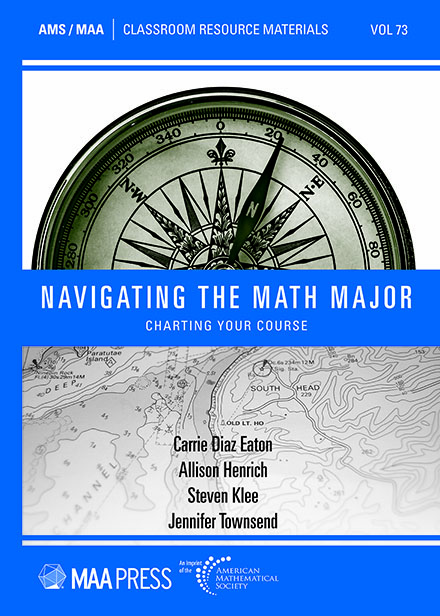
- Author: Carrie Diaz Eaton, Allison Henrich, Steven Klee, and Jennifer Townsend
- Series: MAA Press: Classroom Resource Materials
- Publisher: American Mathematical Society
- Publication Date: 06/14/2024
- Number of Pages: 172
- Format: Paperback
- Price: $65.00
- ISBN: 978-1-4704-7583-3
- Category: gen
[Reviewed by Bill Satzer, on 11/12/2024]
This is a thoughtful guide for students who are math majors (or thinking about it) and for instructors or advisors. The authors consider many different aspects of questions that students might have with particular emphasis on making good choices that incorporate individual interests and special passions, and lead to successful outcomes.
The discussion includes variations depending on the level of the student (first or second year vs. third and fourth), course choices, how to find help when it’s needed, what skills can best support student success, and questions about life after graduation. What career options are open to mathematics majors?
Opportunities for future employment available to mathematics majors have changed significantly over the past couple of decades. What once seemed fairly limited has broadened to include many other fields such as data science and machine learning, finance, biological and medical applications, and even more. The current book recognizes those changes and offers students new ways to think about their future.
The “Planning Your Future” chapter speaks to students at all stages of their education. It includes discussions of types of courses, as well as the more general issue of values, goals and interests, and questions about preferences for theoretical or applied mathematics. Especially useful are interviews with former mathematics majors who have gone on to a variety of careers.
The authors attempt to consider all the aspects of life and career that future mathematics majors might encounter. They are thorough. They describe technical skills that are mandatory or useful, options for finding help for students who are uncertain or struggling, support organizations, and opportunities for internships. Many possible career paths are illustrated. The whole process of applying for graduate schools or other positions is also mapped out.
This would be a valuable book for mathematics undergraduates as they proceed through their undergraduate work. It might be even more usual for those who advise them.
Bill Satzer (bsatzer@gmail.com), now retired from 3M Company, spent most of his career as a mathematician working in industry on a variety of applications. He did his PhD work in dynamical systems and celestial mechanics.
